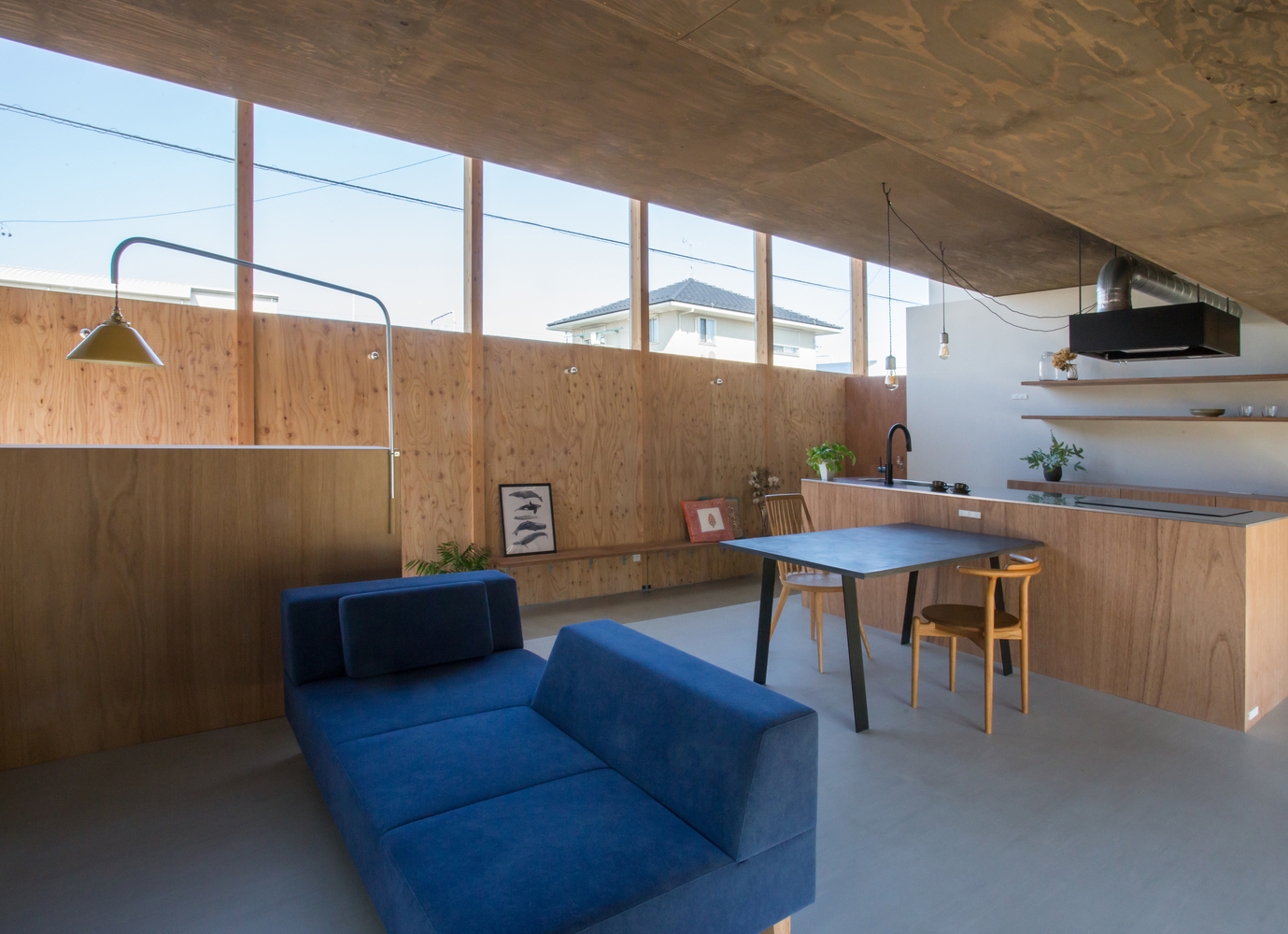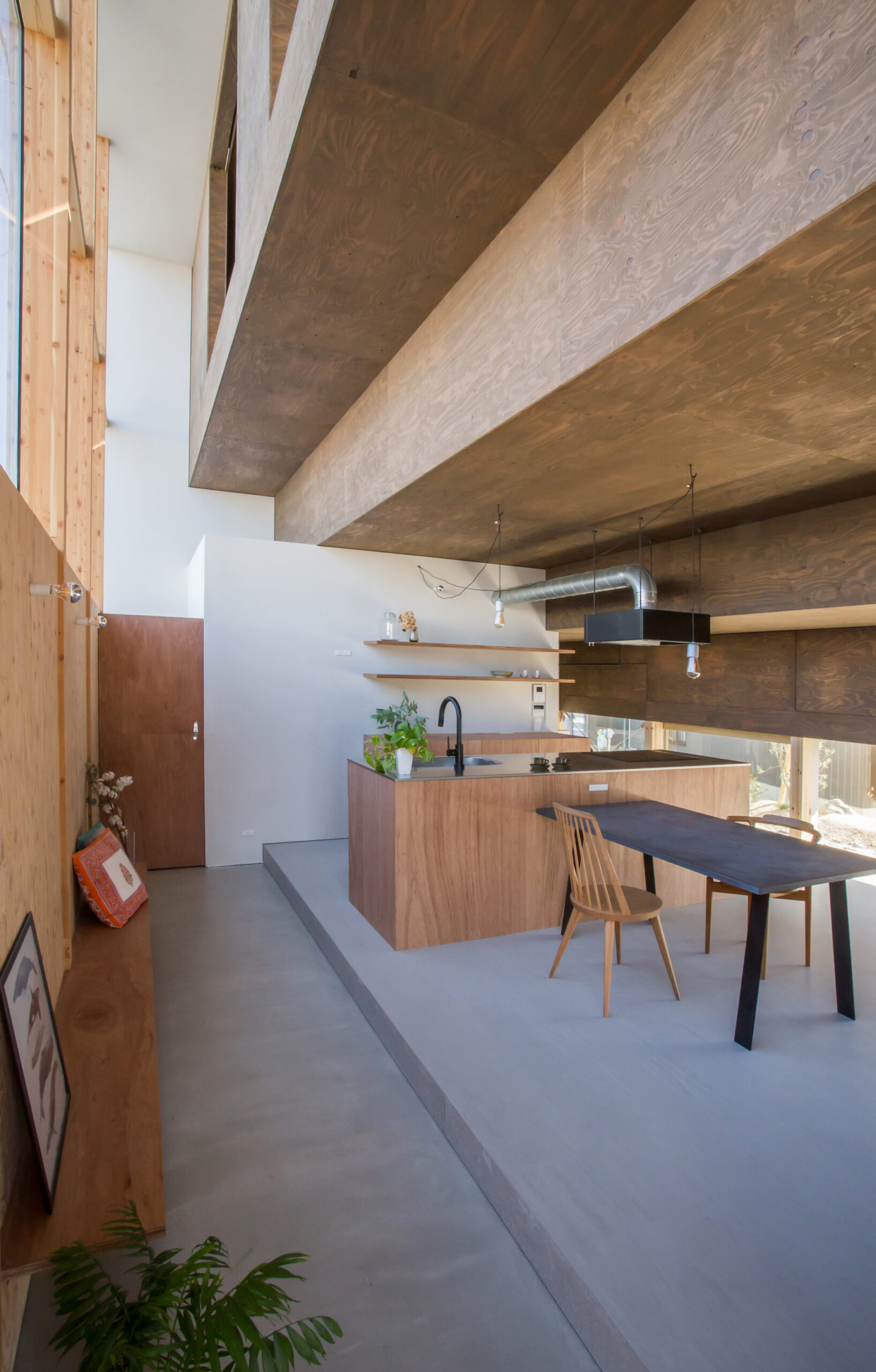House ST is a minimal residence located in Aichi, Japan, designed by 1-1 Architects. The site is a newly created lot in front of station redevelopment in a local city. Despite its location in a commercial area, the client decided to live here for various reasons. Therefore, the site is located less than a minute’s walk from the station and is surrounded by a new wide road and a large plot of undeveloped land characteristic of a commercial area.
When the architects first surveyed the site, the wide 11-meter-wide front road and the large, elevated station stretching out in front of it seemed mismatched to the scale of the residence. Therefore, in this project, they proposed a house that connects the city and the house by considering the conflict between the large, civil scale of the city and the small scale of the house as the context of this town, and by creating an appropriate setting for each. Specifically, the building is located at the very edge of the road in front of the house, and the first floor is scaled down gradually from the roadside. The interior of the house on the street side has a vaulted ceiling height of over 6 meters and windows that bring the large scale of the city into the interior of the house.
From there, the ceiling height lowers in a stair-like manner toward the back of the house, gradually transforming into a small space that seems to be enveloped by the city. Finally, a 1.4-meter-high piloti connects to the exterior garden. By making the interior space on the first floor with different ceiling heights a seamless space without pillars, the elevated view seen from the large window at the roadside and the garden view seen from the low small window at the back is connected in the living space. The first floor with different ceiling heights in the form of a staircase allows the second floor to take on its inverted shape. The second floor is accessed from the low ceiling space on the first floor and is a dark and calm space composed of private rooms.
Each bedroom, the most private space, has a large window with a view of the elevated station in front of it through the stairwell. This location allows the residents to reconnect with the city. This residence proposed a way of living that connects the different scales of the city and the residence in the redevelopment area in front of the station. By designing spaces that are seamlessly connected to each other, the residents can discover a variety of places to live, such as being openly connected to the city or relaxing in their own enclosed space, through small daily activities such as standing, sitting, or lying down. The studio hoped to create a way of living and a landscape that neither blends in nor resist the city.
Structural Planning – The first floor, a column-free space that allows the viewer to seamlessly perceive changes in scale, was achieved by employing a suspended structure from above and a wooden truss structure. In addition, the large window at the street level is not a structural wall, but a 90 x 150 mm wood column was adopted to match the split glass for wind pressure resistance, which sets it apart from other structural materials.
Photography by 1-1 Architects









